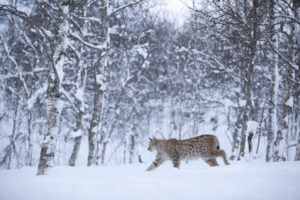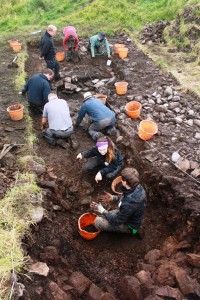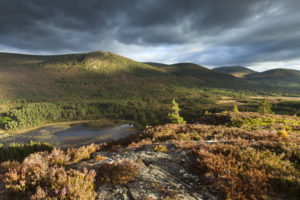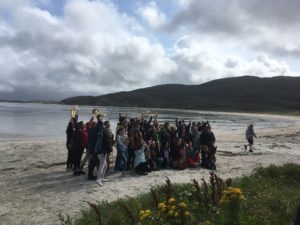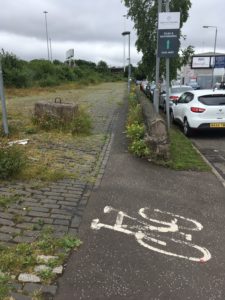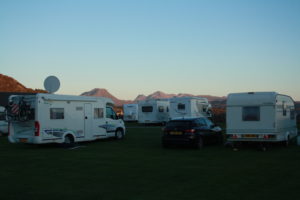The fact that you really notice it is maybe an indication of how bad things have got in the Highlands
Coming down off Stob Ban at the end of a weekend away with the Lomond Mountaineering Club, I came to a fence. On my side there were a few birches, mostly past mature and falling into decay, but no seedlings, saplings or scrub, just cropped, wet, tussocky grass.
The other side of the fence was a mass of birch saplings, and, lower down the hill, young Scots pine, all scattered about in a random way.

The small muddy path that runs down from the north ridge of the mountain went through a gate in the deer fence and then through the new woodland, with some of the new growth across the path, which probably doesn’t get a lot of use as most Munroists (and lesser folk) bag Mullach Nan Coirean as well and come down a different way.
Of course fences are not the only way to prevent browsing and nearby I saw some regeneration on what I think was the open hill – perhaps evidence of reducing the deer numbers in the area.
The fenced area is on the Glen Nevis estate, and there is other regenerating woodland in the glen – all connected, I assume, with the work of the excellent Nevis Landscape Partnership.
I see more and more of these areas as I travel around the Highlands these days: I noticed regeneration up in Coigach at Easter, with new woodland spreading between Beinn More Coigach and the road; and near Balquhidder, much closer to home, a fence has brought startling regeneration to the bottom of Inverlochlarig Glen.
But it is the contrast with the huge swathes of land that is almost totally denuded of trees that is surprising. After looking at the woods in Glen Nevis, and the glowing autumn colours around the Polldubh crags, driving back through Glen Coe and then over toward Bridge of Orchy was especially bleak, with the Bridge of Orchy Hills standing out as treeless, coverless, and grim, where perhaps I had once enjoyed their sweeping lines and a stark beauty.
It’s a bit like the way my feelings changed about invasive rhododendron once learned that the beautiful purple flowers are a sign that a hugely damaging invasive plant is taking over and destroying the native vegetation.
I’ve been talking to a lot of people recently about deer management and woodland regeneration, and one thing is clear: more woods in the Highlands will be a good thing, as a carbon sink, to enhance the landscape, and to provide woodland products, shelter for the deer themselves and a richer landscape better able to cope with both climate change and our efforts at rewilding.
How we get there will depend on government decisions, land managers, conservation groups, and a lot of co-operation. Traditional estates tend to favour fencing, while owners focused on conservation tend to prefer deep culls, reducing deer numbers and scaring the deer away from the richer woodland sites.
But the co-operation is coming, and whether they’ll admit it or not the traditional estates are sounding an awful lot more like the conservationists than perhaps they once did.
Scottish Field Magazine quotes Richard Cooke, chair of the Association of Deer Management Groups, this week as being optimistic that the forthcoming review of the state of deer management by Scottish Natural Heritage will be favourable to his members: ‘The evidence from the review will we believe show that our sector is at the forefront of ecological and habitat regeneration, enhancing the landscape, and managing Scotland’s iconic deer herd sustainably – all a far cry from how, and too often, we are portrayed.â€
Many in the conservation world will be understandably a little cynical at this but perhaps it’s time for them to step outside their silo and look at what’s happening on the other side of the fence (quite literally in some cases…)
While they may well want more of a big stick approach to landowners who don’t curb deer numbers properly, and with some justification, the reality is that politics and pragmatism mean they have to work together with landowners, so showing a little sympathy might help.
